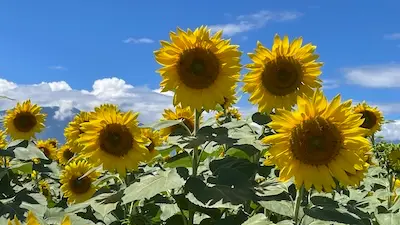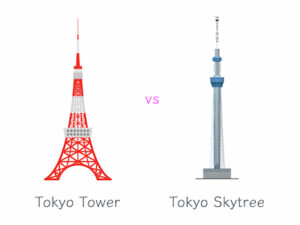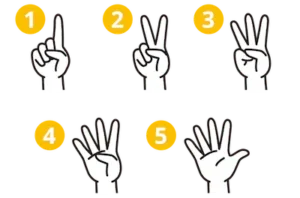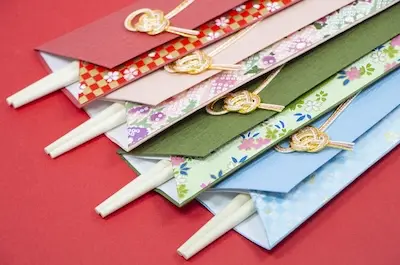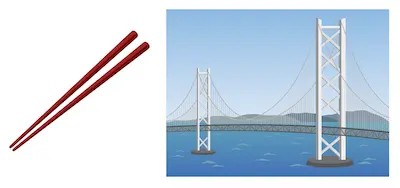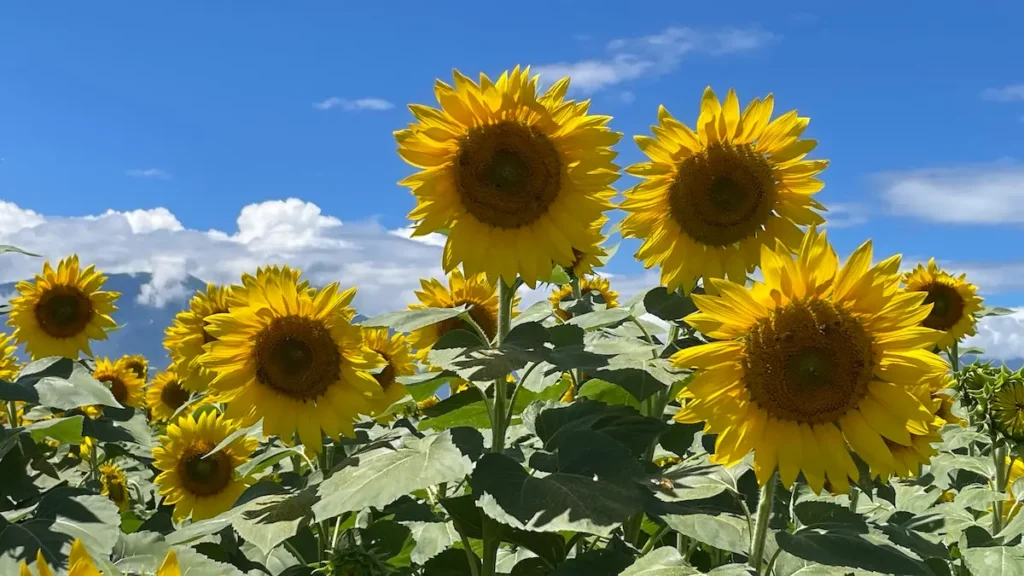
What Is This in Japanese?”—Natural Ways to Ask and Useful Phrases
Summer Means “Sunflower”
When we think of summer, sunflowers come to mind as a symbol of energy and vitality in Japan.
The kanji for sunflower, 向日葵, means “a flower that faces the sun.” It reflects the Japanese appreciation of nature.
Also, when you ask “What is 〇〇 in Japanese?” it shows respect for the person you’re speaking to.
Today, I will introduce Japanese phrases while sharing these cultural insights.
What Does “〇〇” Mean in Japanese?
One of the most common questions English speakers ask is:
“What is 〇〇 in Japanese?”
In Japanese, you say:
「〇〇は にほんごで なんですか。」
Here are some examples:
- A:“Sunflower” は にほんごで なんですか。
“Sunflower” wa Nihongo de nan desuka?
B:「ひまわり」です。
Himawari desu. - A:“Rice ball” は にほんごで なんですか。
“Rice ball” wa Nihongo de nan desuka?
B:「おにぎり」です。
Onigiri desu. - A:“Bedding” は にほんごで なんですか。
“Bedding” wa Nihongo de nan desuka?
B: 「ふとん(布団)」です。
Futon desu. - A:“Hot spring” は にほんごで なんですか。
“Hot spring” wa Nihongo de nan desuka?
B:「おんせん(温泉)」です。
Onsen desu. - A:“Train station” は にほんごで なんですか。
“Train station” wa Nihongo de nan desuka?
B:「えき(駅)」です。
Eki desu. - A:”Ticket” は にほんごで なんですか。
“Ticket” wa Nihongo de nan desuka?
B:「きっぷ(切符)」です。
Kippu desu. - A:“Umbrella” は にほんごで なんですか。
“Umbrella” wa Nihongo de nan desuka?
B:「かさ(傘)」です。
Kasa desu. - A:”Bathroom / Restroom” は にほんごで なんですか。
“Bathroom / Restroom” wa Nihongo de nan desuka?
B:「トイレ」です。
Toire desu.
Asking About Words Can Lead to Great Conversations
When you ask,
“What is 〇〇 in English?”
or
“What is 〇〇 in Japanese?”,
you open the door to a deeper understanding of language.
Learning words related to seasons or culture helps you connect with Japan on a deeper level.
It also makes your Japanese sound more natural.
What is your favorite word in Japanese?
Keep exploring new words—and try saying them in both English and Japanese!
How Do You Write “Himawari” in Kanji?
In hiragana, “himawari” is written as ひまわり.
This is often used in books for children or on signs.
But there is also a kanji version:向日葵
Each of these characters has a meaning:
- 向 (むく): to face or turn toward
- 日 (ひ): sun or day
- 葵 (あおい): a plant name (hollyhock family)
So, 向日葵 means
“a flower that turns toward the sun.”
In fact, real sunflowers turn their faces to follow the sunlight.
That unique behavior is reflected in the kanji.
Japanese kanji often express meaning through shape and combination.
Once you understand the meaning, it becomes easier to remember.
By the way, did you know that some native Japanese speakers feel that texts written only in hiragana are harder to read?
Why is that?
I’ll share more about it in the next article, “Do I Really Need to Write Kanji? Focus on Reading for Fluency”.
Japanese of the Day / 今日の日本語
- Word:なんですか (nan desu ka) – What is it? / What’s this?
- Meaning:A polite and common way to ask what something is in Japanese.
Often used when pointing to or noticing something you don’t understand. - Example:これは何ですか?(Kore wa nan desu ka?)
(What is this?) - Fun Fact:In Japanese, なんですか can be used for objects, situations, or even when you hear something surprising.
It’s versatile and very common in everyday conversation.
◆ Would you like to practice speaking Japanese? ◆
In my lessons, you can use Japanese a lot and learn to speak naturally with me.

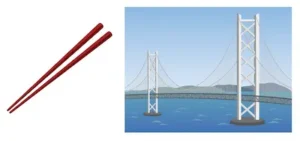
夏といえば「ひまわり」
夏といえば「ひまわり」。日本では夏の元気な象徴として人気があります。
「向日葵」という漢字は「太陽に向かう花」という意味です。日本人の自然観が表れています。
また、日本語で「〇〇は日本語でなんですか?」と聞くときは、相手への敬意を示す大切な表現です。 今日は、こうした文化も感じながら、日本語のフレーズをご紹介します。
「〇〇は日本語でなんですか?」
英語を話す方がよく使うフレーズの一つが、これです:
“What is 〇〇 in Japanese?”
(○○は にほんで なんですか。)
たとえば:
- A:“Sunflower” は にほんごで なんですか。
B:「ひまわり」です。 - A:”Rice ball“ は にほんごで なんですか。
B: 「おにぎり」です。 - A:”bedding“ は にほんごで なんですか。
B: 「ふとん(布団)」です。 - A:”Hot spring” にほんごで なんですか。
B:「おんせん(温泉)」です。 - A:”Train station” にほんごで なんですか。
B:「えき(駅)」です。 - A:”Ticket” は にほんごで なんですか。
B:「きっぷ(切符)」です。 - A:”Umbrella” にほんごで なんですか。
B:「かさ(傘)」です。 - A:”Bathroom/Restroom“は にほんごで なんですか。
B:「トイレ」です。
ことばの意味を聞くことから、会話がはじまります
このように、
「〇〇は英語でなんですか?」
「〇〇は日本語でなんですか?」
と聞くことで、ことばの世界が広がります。
特に、季節や文化に関係する言葉を知ることで、日本語の奥深さや日本らしさを感じることができます。
あなたの好きな日本語は何ですか?
ぜひ、新しい言葉を見つけて、英語でも日本語でも言えるようになってください。
「ひまわり」は漢字でどう書く?
「ひまわり」は、ひらがなで書くと ひまわり。
子ども向けの絵本や標識などでは、ひらがなが使われます。
でも、漢字もあります。
漢字ではこのように書きます:向日葵
この3文字には、それぞれ意味があります。
漢字の意味を見てみましょう
- 向(むく):向かう、向いている
- 日(ひ):太陽、日(sun)
- 葵(あおい):植物の名前(アオイ科の花)
つまり、「向日葵」= 太陽に向かって咲く花 という意味になります。
実際に、ひまわりの花は太陽の方に顔を向けて咲いています。
この特徴が、そのまま漢字にも表れているのです。
日本語の漢字は、意味を表すことが多いです。意味がわかると、漢字も覚えやすくなります。
また、日本人はひらがなだけの文章を難しく感じます。
なぜなら…次回 “Do I Really Need to Write Kanji? Focus on Reading for Fluency”で、その理由をお伝えしたいと思います。

